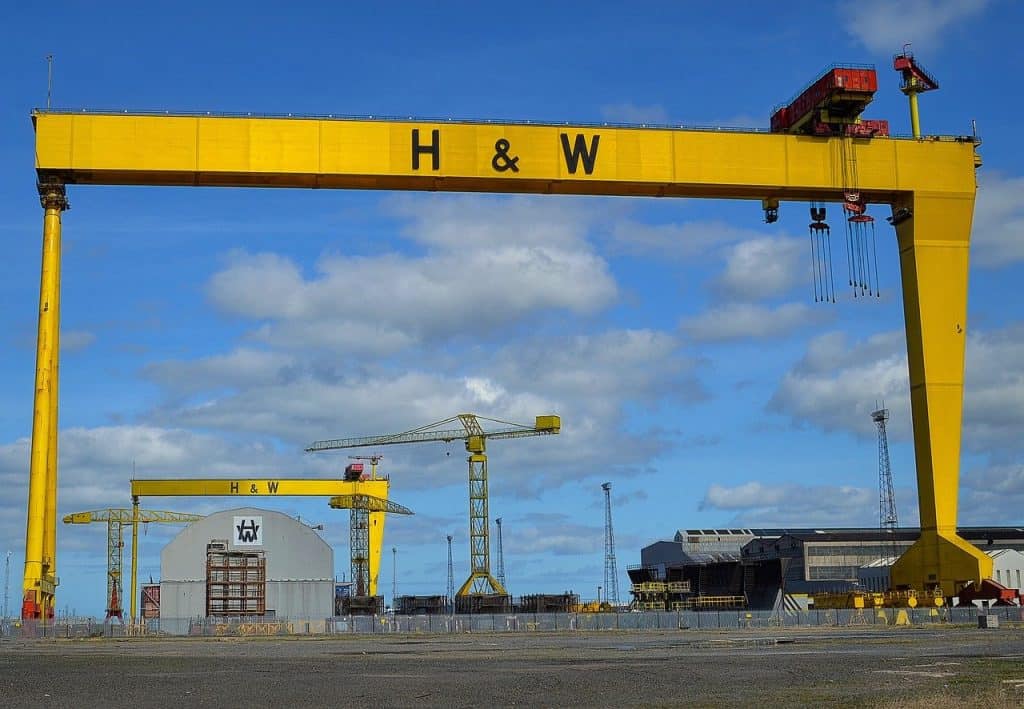Belfast, a city steeped in maritime history, has a treasure trove of attractions and experiences waiting to be discovered. From shipbuilding prowess to innovative graving docks, Belfast’s rich maritime heritage offers visitors an exceptional journey through time. So, let’s embark on a voyage through Belfast Harbour’s remarkable maritime legacy and uncover the fascinating stories behind its historic sites and modern marvels, all centered around the iconic Belfast Harbour.
Key Takeaways
Explore Belfast’s maritime mile, a district centering around Queens Road and Queen’s Island.
Experience the city’s shipbuilding prowess through its iconic liners such as Titanic, Thompson Graving Dock & Pumphouse and other attractions.
Enjoy guided tours of the slipways along with whiskey tasting at Titanic Distillers or a luxurious stay at The Titanic Hotel.
The Heart of Belfast’s Maritime Mile
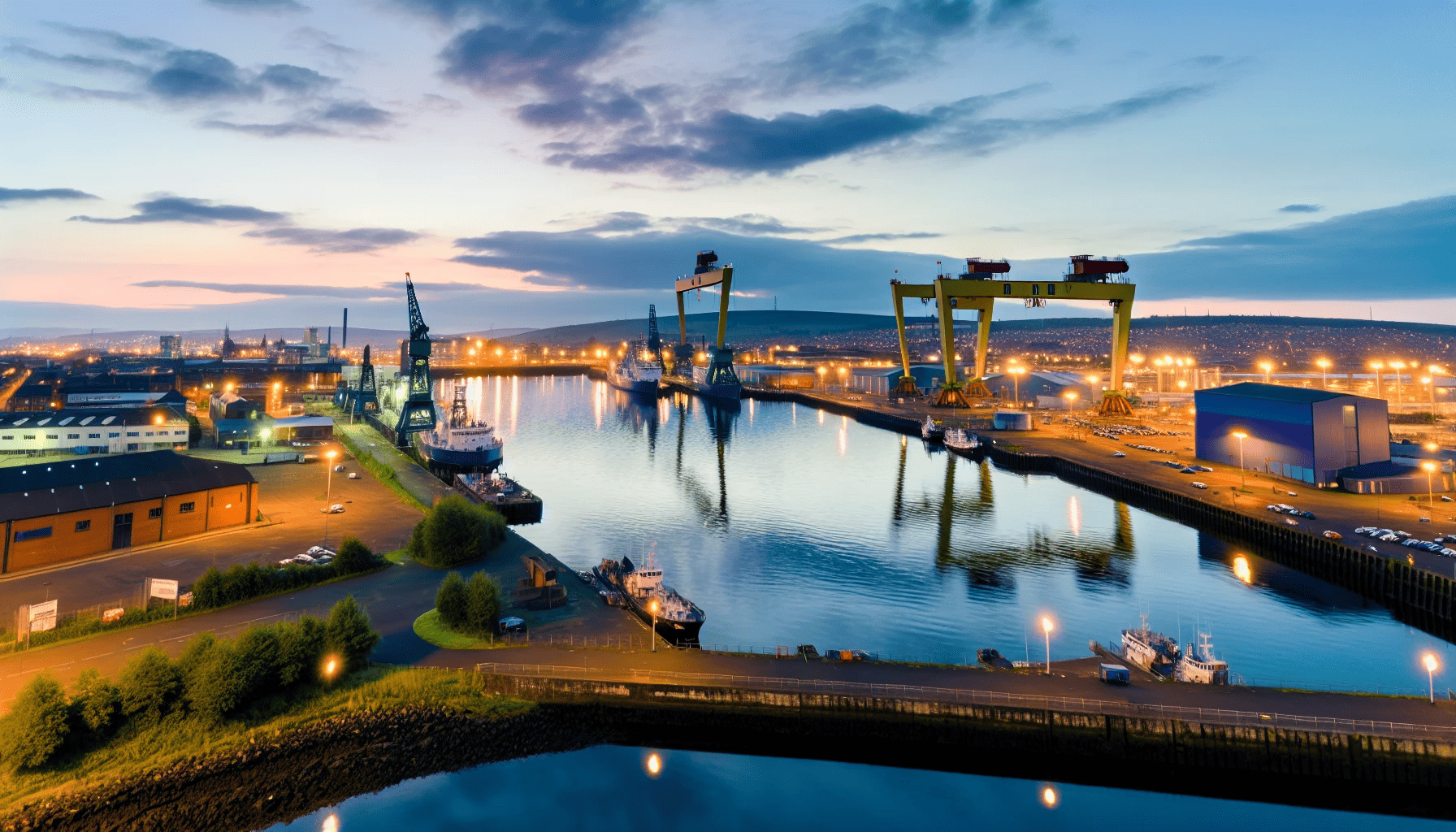
Belfast’s maritime heritage centres around the Maritime Mile, including Queens Road and Queen’s Island. This historic district houses the Alexandra Graving Dock, home to the restored First World War ship HMS Caroline. Currently, the Caroline functions as a floating museum, allowing visitors to understand the Titanic story and Belfast’s maritime past.
Another key attraction along the Maritime Mile is the Alexandra Dock, which houses the dry dock constructed for RMS Titanic and its sister ships, known as the Titanic Dock and Pumphouse. Visitors can attend guided tours or explore the area independently, discovering this site’s vital role in the city’s shipbuilding past.
The Evolution of Queens Road
Previously, Belfast’s Queens Road was an underdeveloped area, recognized mainly for the ironworks set up by Hickson in the Cromac region. Yet, with the creation of shipyards like Harland and Wolff, specializing in ship repair, conversion, and offshore construction, the area underwent a significant transformation. These shipyards played a pivotal role in the growth of Belfast’s maritime industry, transforming Queens Road into a bustling shipbuilding hub.
The metamorphosis of Queens Road was spurred by a series of events and key contributors, including:
Shipyard workers
SThe Titanic Film and Centenary
The City Deal initiative
Investments from Belfast Harbour
- The Titanic Studios
These individuals and initiatives helped fuel the city’s economic growth and contributed to the area’s social and economic development. As a result, Queens Road evolved from a rural landscape into a thriving epicentre of shipbuilding expertise.
Queen’s Island: A Land Reclaimed
Belfast’s land reclamation history dates back to 1847, with the inception of the Belfast Harbour Commissioners. Significant land was reclaimed to develop the port, leading to the creation of the 2,000-acre Harbour Estate. This reclaimed land had a profound impact on Belfast’s expansion and evolution.
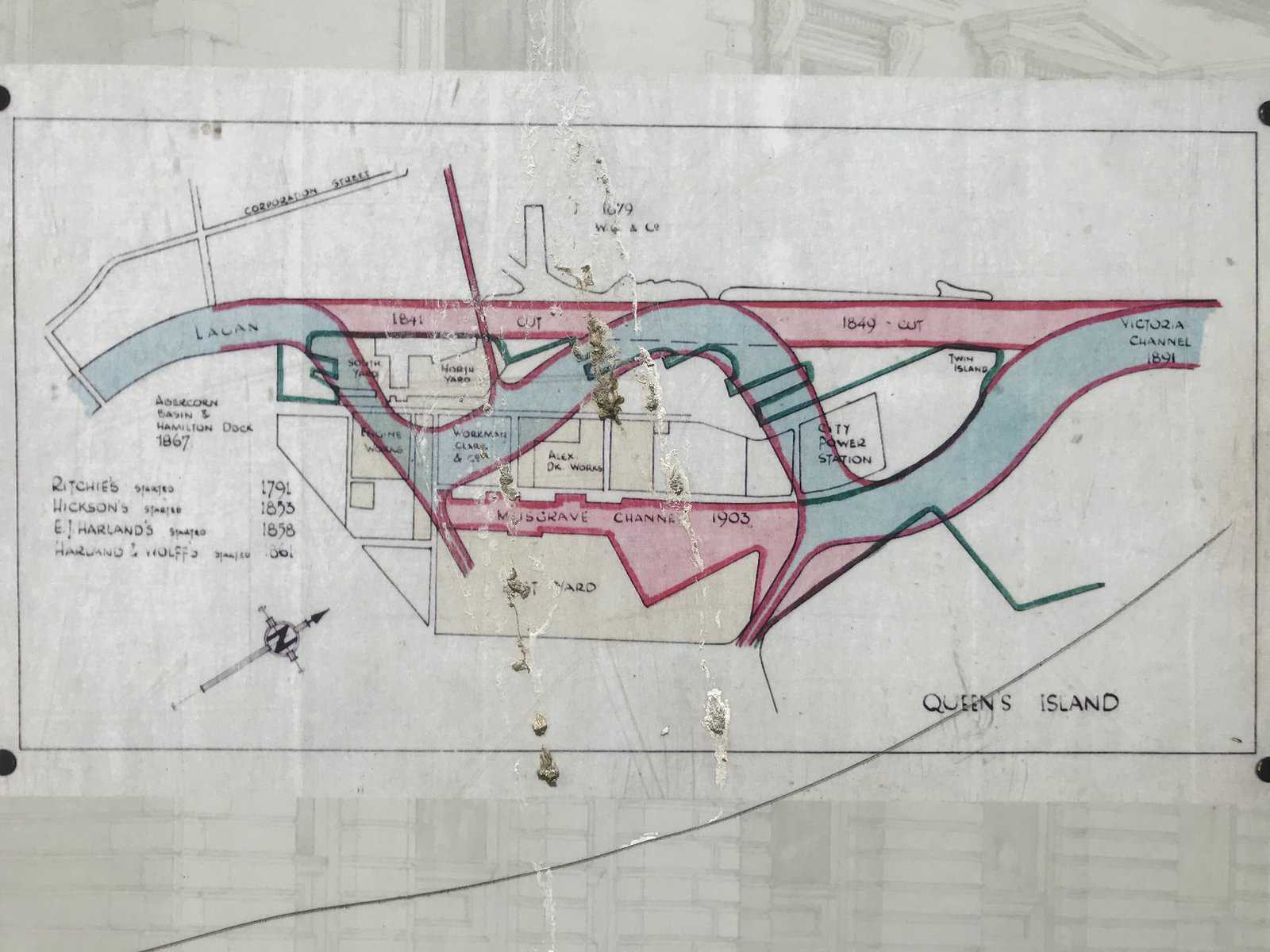
Queen’s Island, initially known as ‘Dargan’s Island’ after engineer William Dargan, was created from soil deposits following the excavation of deep shipping channels. It was later renamed ‘Queen’s Island’ in honour of Queen Victoria’s visit to Belfast in 1849. The creation of Queen’s Island provided a large area of reclaimed land with deep-water access to the Irish Sea, enabling the expansion of shipbuilding and the development of a prosperous port. Furthermore, Queen’s Island offered affordable labour, making it an ideal location for shipbuilding activities.
Belfast’s Shipbuilding Prowess
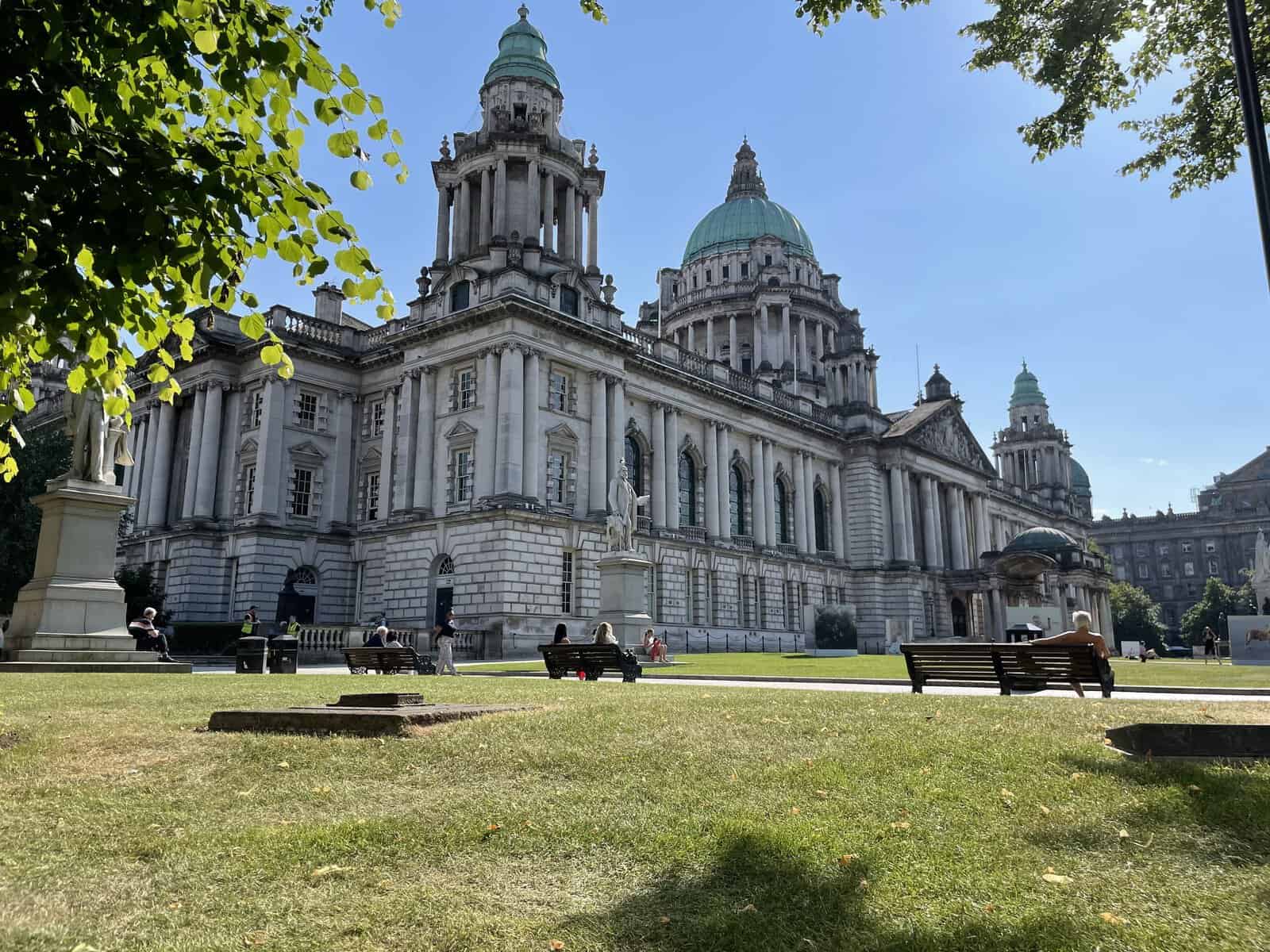
Belfast’s shipbuilding industry began in 1861 when Edward Harland and his associate established a shipyard. In the early 1900s, Belfast’s shipyards gained international recognition for constructing some of the world’s most renowned ships, including the Titanic. The construction of the Titanic at the Harland and Wolff shipyard highlighted the city’s shipbuilding expertise and affirmed its standing as a premier shipbuilding centre.
Following the Titanic, Belfast’s shipbuilding industry underwent a series of changes, facing challenges and periods of resurgence. The shipyards that built the Titanic continued to shape Belfast’s maritime heritage, contributing to the city’s rich shipbuilding history.
The Liner’s Launch Legacy
The tradition of launching iconic liners from Belfast’s shipyards is represented by the construction of massive ships, like the Titanic and Britannic, utilising advanced methods and technologies. In the 20th century, shipbuilding in Belfast, particularly at Harland & Wolff shipyard, involved sophisticated processes, including:
design and engineering
steel fabrication
assembly
outfitting
launching of massive ships
The shipyard’s prowess was also characterized by its two iconic cranes, dominating the Belfast skyline and playing a crucial role in ship construction and launching.
The shipbuilding industry significantly impacted Belfast’s economy over a century, providing employment and generating investment. It also became entangled in intricate political and social disputes, leaving a lasting imprint on Belfast’s society. Technological advancements made in Belfast’s shipyards include:
The construction of new fabrication halls
The introduction of a technologies division
The implementation of creative design and play areas to commemorate the city’s nautical background
Shipyards Beyond the Titanic
After the Titanic, Belfast’s shipyards continued to evolve and diversify. Notable vessels constructed in the city include HMS Caroline, a Royal Navy ship from World War One, which now resides permanently in Belfast’s Titanic Quarter. The shipbuilding industry experienced a decline in later years, with the potential closure of the Harland and Wolff shipyard, once a major employer in the city. However, efforts have been made to preserve and revive Belfast’s shipbuilding heritage, such as rebranding the city as ‘Titanic Town’ and creating industrial heritage attractions at Queen’s Island.
Investments in modernising facilities and developing new shipbuilding techniques marked the advancements in Belfast’s shipyards following the Titanic era. The industry’s diversification played a significant role in Belfast’s maritime history, shaping the city’s landscape and contributing to:
the growth of the Titanic Quarter
the success of Titanic Belfast
The recent return of shipbuilding to Belfast with Harland & Wolff consortium securing a £1.6 billion contract with the Royal Navy.
The Graving Docks of Innovation
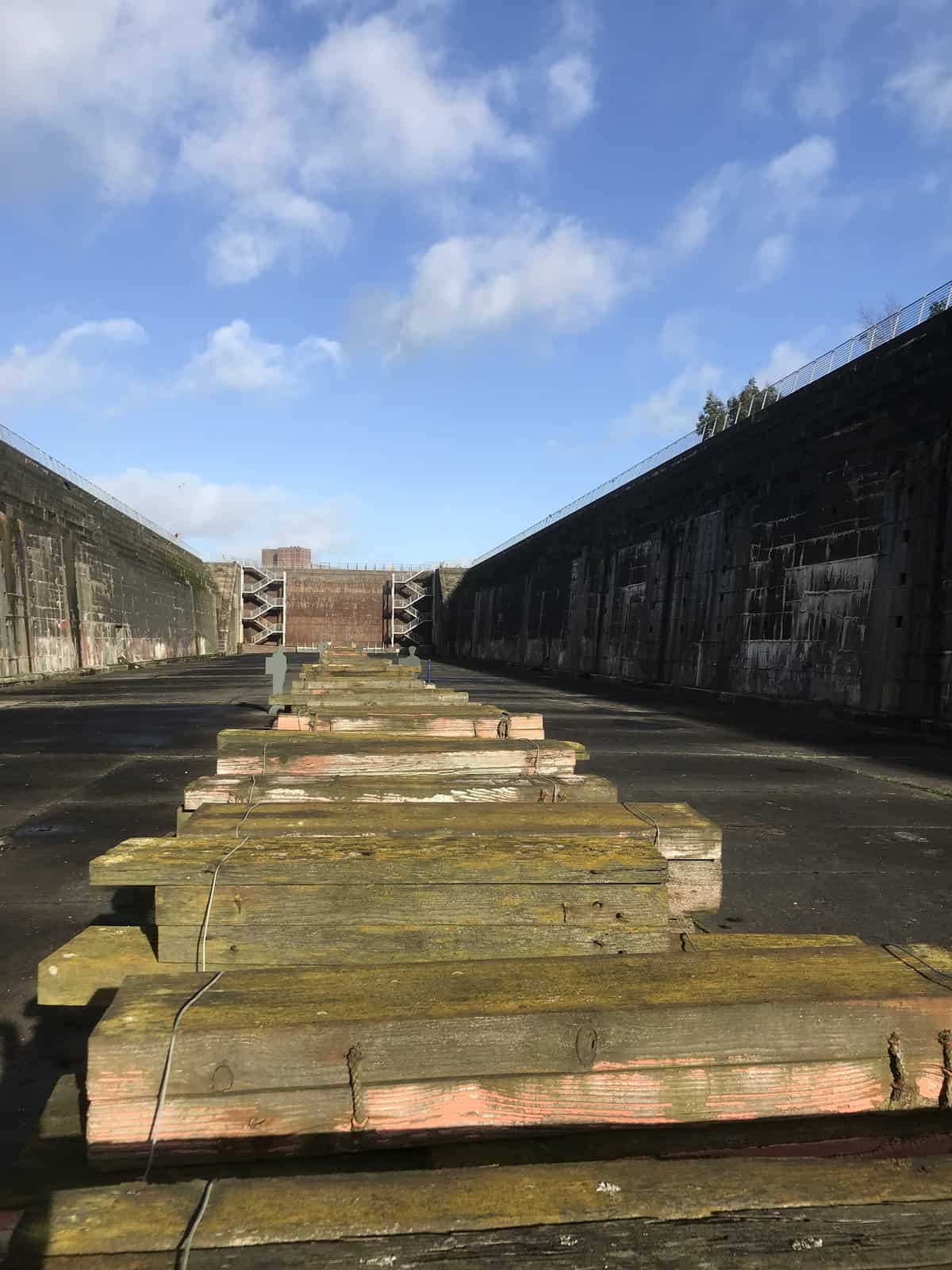
Belfast’s innovative graving docks, including the monumental Thompson Graving Dock, played a pivotal role in the city’s shipbuilding prowess. Graving docks are enclosed basins that can be flooded to float a ship inside and then drained to allow the vessel to rest on blocks for maintenance or repair. The Thompson Graving Dock and Pumphouse, a dry dock and an ancillary structure used to drain Thompson Dock, are key examples of Belfast’s innovative engineering.
Powerful pumps were essential in maintaining the graving docks, allowing them to function effectively and efficiently. These pumps were crucial for various purposes, including:
Ballasting
Bilge pumping
Firefighting
Cargo handling
The pumps enabled water removal from the ship’s compartments, ensuring stability and preventing flooding.
Titanic’s Dock: A Monumental Structure
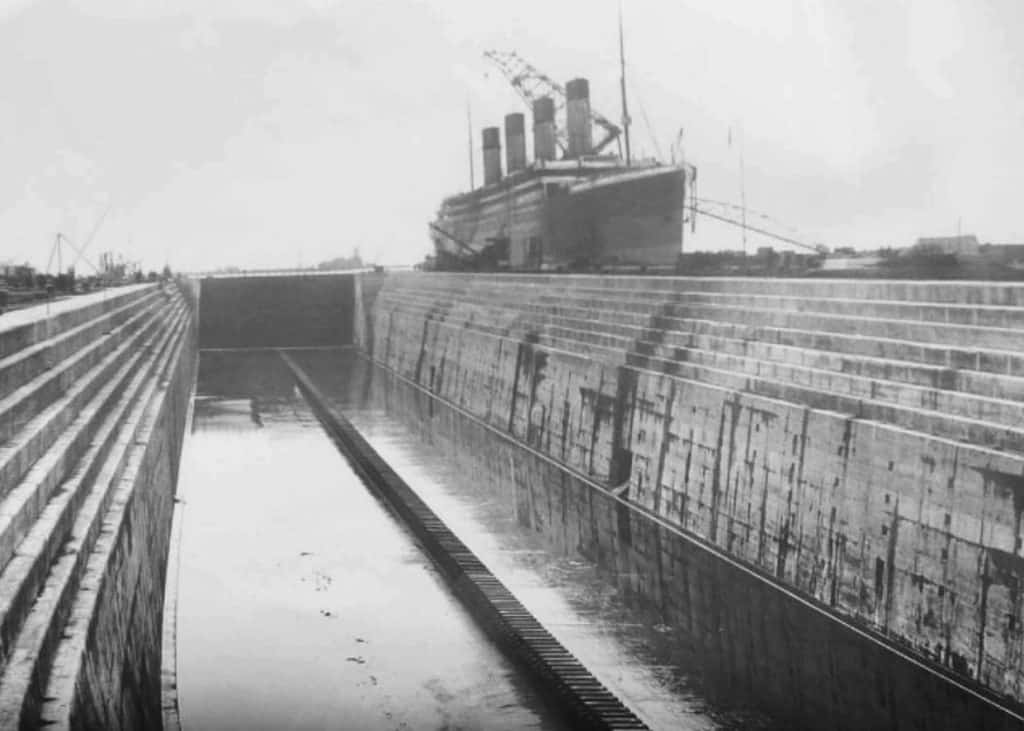
The Thompson Graving Dock, the construction site of the Titanic, stands as a monument to the impressive structure and engineering capabilities of its time. It serves as a tribute to the construction of the Titanic and is a reminder of the ship’s immense size. The dock, which utilized heavy steel and wooden blocks for the keel of the ships to rest on, demonstrates the engineering prowess of Belfast’s shipbuilders.
The Thompson Graving Dock is of significant historical importance. It was the last place the Titanic rested on dry ground before its fateful voyage. As part of Belfast’s Maritime Mile, the dock allows visitors to explore the city’s rich maritime history and the Titanic’s legacy.
The Role of Powerful Pumps
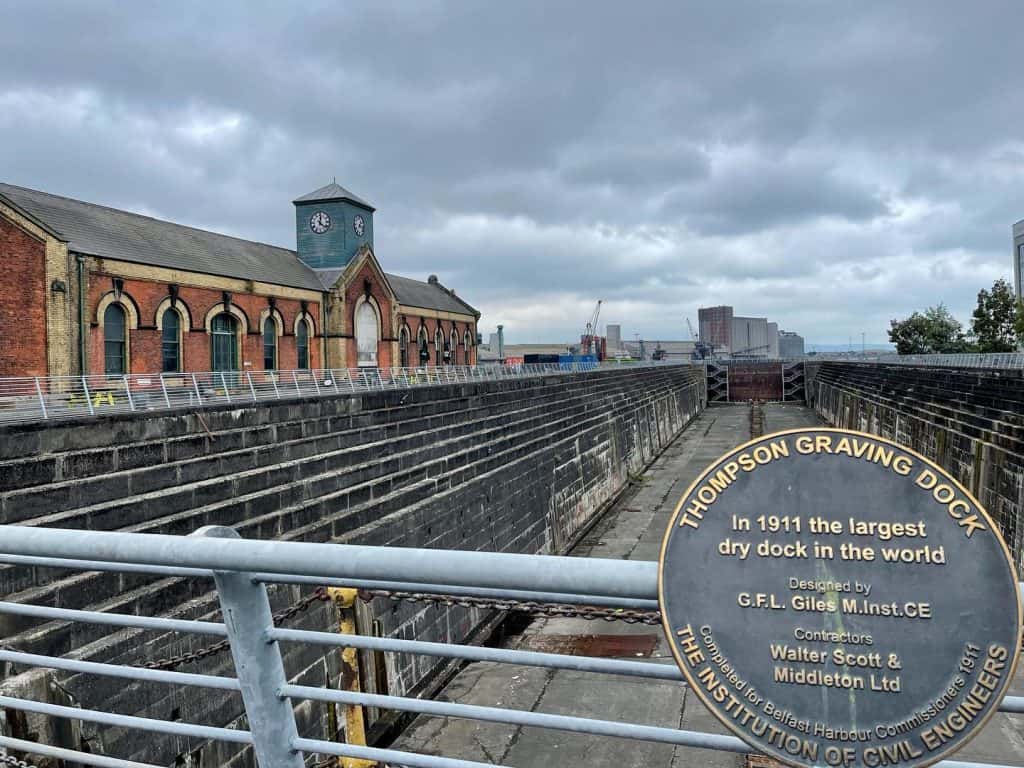
Powerful pumps were integral to the function and maintenance of Belfast’s graving docks. With a capacity of 60 m3/second (60,000 litres/second), these powerful pumps could drain the Thompson Dock of 26 million gallons of water in just 90 minutes, at a rate of two swimming pools per minute. The apparatus enabling such a powerful operation is located in the Pump House.
The importance of powerful pumps in graving docks cannot be overstated. They were crucial for:
Removing water from the ship’s compartments, ensuring stability, and preventing flooding
Transferring fuel, oil, and other fluids necessary for the operation of the ship
Providing the required water pressure for firefighting on board
The Historic Pump House
The historic Pump House, located in Belfast’s Titanic Quarter, is a fine example of late Victorian architecture. It is characterized by:
Red bricks
Cream façade
Impressive arched windows
Distinguished clock tower
The Pump House once served as the epicentre of Harland & Wolff’s operations during the construction of the Titanic and other White Star Liners. Today, it has been transformed into a heritage attraction, providing information about the dock, pump house, and the Titanic.
Preserving the late Victorian architecture of the Pump House has been a challenging and rewarding endeavour. The challenges include:
Its historical and architectural importance
The cost of maintenance
The effects of deterioration and decay
The alteration of building codes and regulations
The scarcity of skilled craftsmen
Despite these challenges, the Pump House stands as a testament to Belfast’s maritime history and the city’s dedication to preserving its architectural gems.
Preserving Late Victorian Architecture
Late Victorian architecture, dating back to the late 19th century, features:
Steeply pitched roofs
Plain or colorfully painted bricks
Ornate gables
Painted iron railings
Stained glass windows and doors
Dark wooden floors
Arts and crafts details
Finials
Encaustic and geometric tiling
Cavity walls
Sash windows
The Pump House showcases this architectural style with its red bricks, cream façade, arched windows, and handsome clock tower.
Preserving late Victorian architecture can prove to be a difficult task, confronted with issues such as:
historical and architectural importance
the cost of upkeep
the effects of deterioration and decay
the alteration of building codes and regulations
the scarcity of skilled craftsmen
However, the Pump House stands as a testament to the dedication and effort put forth by the city of Belfast to preserve its architectural heritage.
From Industrial Use to Visitor Attraction
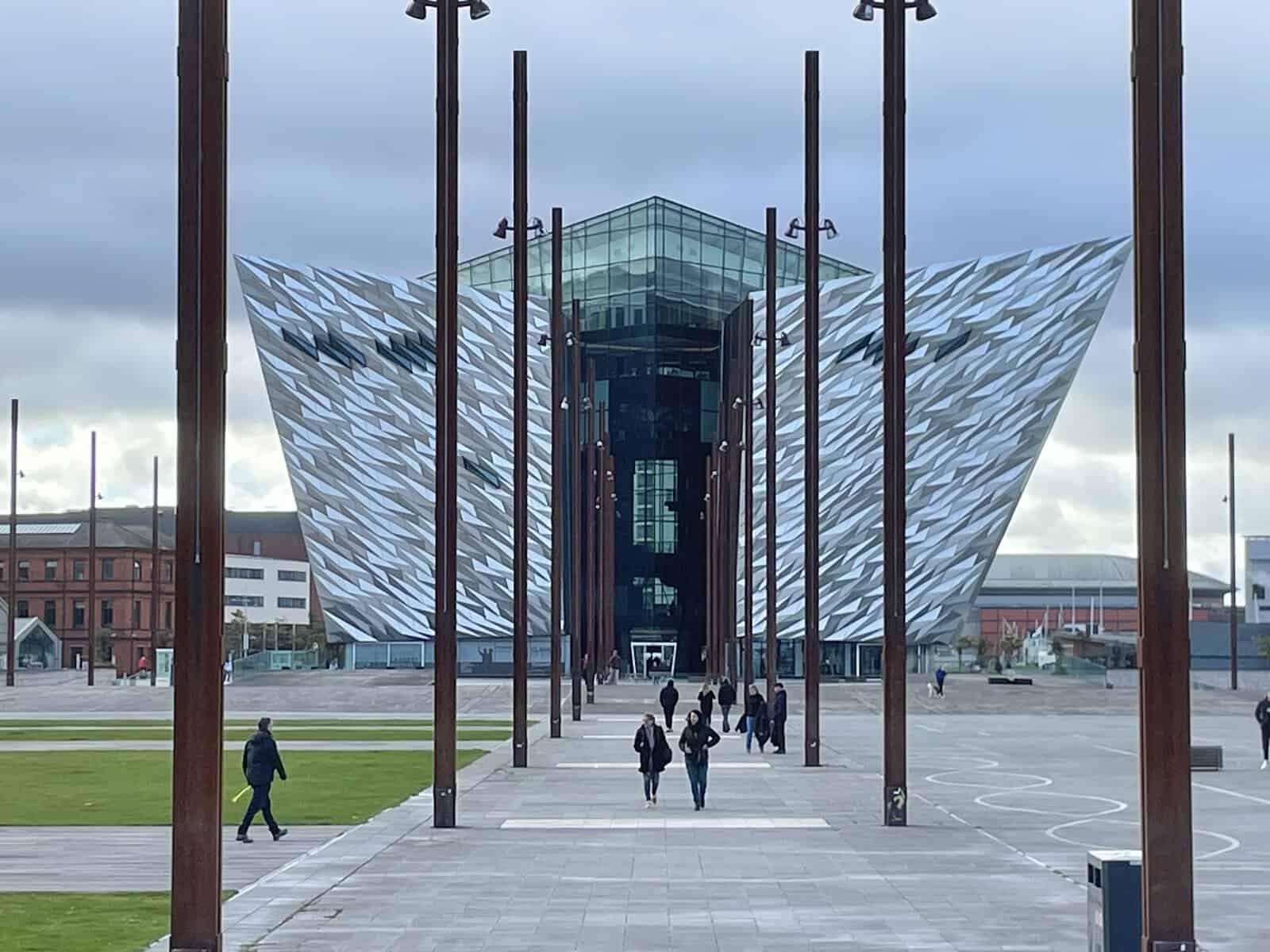
Originally employed as a pumping station for the Belfast Harbour Commissioners, the Pump House has transformed remarkably into a visitor attraction. This conversion was initiated by a project to revitalize the historic building into a functioning distillery and tourist attraction, spearheaded by Tim and Andrew.
Modifications implemented to transform the Pump House into a visitor attraction include:
Rebuilding parts
Repairing a collapsed roof
Removing ivy
Transforming it into a working distillery and tourist attraction
Additionally, art exhibitions have been held, and visitor tour facilities have been added.
Today, the Pump House has been transformed into a Visitor Centre & Café. Guided tours are conducted every day. Visitors can learn about:
The history of the Pump House
Its role during the construction of the Titanic
The fascinating engineering behind the powerful pumps that once drained the Thompson Dock.
Walking Through History: Tours and Attractions
For those interested in Belfast’s maritime history, various tours and attractions offer an immersive experience. From walking the Maritime Mile to discovering the stories behind the city’s iconic slipways, visitors can delve into the fascinating world of shipbuilding and engineering that defined Belfast’s past.
One such tour is the Best of Belfast walking tour, which offers comprehensive information about Belfast’s shipbuilding history, as well as insights into the city’s street art, architecture, and unique stories. Other storytelling tours recount Belfast’s maritime history through captivating tales of the Titanic and other renowned vessels.
Slipways and Stories
The slipways of Belfast hold unique stories and anecdotes that form an integral part of the city’s maritime history. Among the most noteworthy are the Titanic Slipways, where the Titanic and Olympic were launched more than a century ago. These slipways are now a premier outdoor performance venue and hold historical importance in Belfast’s shipbuilding legacy.
Other unique stories linked to Belfast’s slipways include the presence of HMS Caroline, a Royal Navy ship from World War One that has been berthed in Belfast for over a hundred years, and the return of the SS Nomadic, a tender that ferried passengers to the Titanic. These stories demonstrate Belfast’s rich maritime history and its connection to famous vessels.
A Century Ago: Recounting Past Glories
Reflecting on a century ago, Belfast’s shipbuilding industry had major achievements to its credit, such as the construction of the Titanic and the SS Britannic. The city was acclaimed globally as a hub of shipbuilding and engineering excellence. Through various tours and attractions, visitors can now experience a glimpse of these past glories, immersing themselves in the city’s rich maritime heritage.
Key events highlighted in Belfast’s historical tours include:
The establishment of the Harland and Wolff shipyard in 1861
The building of the Titanic
The flourishing of the industry between 1880 and the commencement of the Great War
These occurrences served to cement Belfast’s reputation as a leading figure in the shipbuilding industry in Northern Ireland.
Modern Marvels: Belfast City Hall to Titanic Distillers
Along with its historic sites, Belfast presents a variety of contemporary attractions for visitors to enjoy. Belfast City Hall, completed in 1906, is an impressive example of Baroque Revival architecture and offers guided tours for those interested in the city’s history and governance. Another modern marvel is the Titanic Distillers, a whiskey distillery located within the former Harland & Wolff Drawing Offices, where the plans for the Titanic were drawn up.
Adjacent to the Titanic Distillers is the Titanic Hotel, a luxurious five-star hotel offering a memorable stay for guests exploring Belfast’s maritime history. Housed in the former Harland & Wolff Drawing Offices, the hotel features Art Deco furniture, maritime artwork, and more than 500 artefacts, photographs, and artworks associated with the Titanic.
Clink of Glasses at Titanic Distillers
Titanic Distillers provides a distinct experience for visitors to Belfast. This distillery, located in the city’s Titanic Quarter, produces single malt premium whiskey inside the historic Titanic Pumphouse. It combines Belfast’s rich maritime history with the art of whiskey making, providing an exceptional experience for whiskey enthusiasts and history buffs alike.
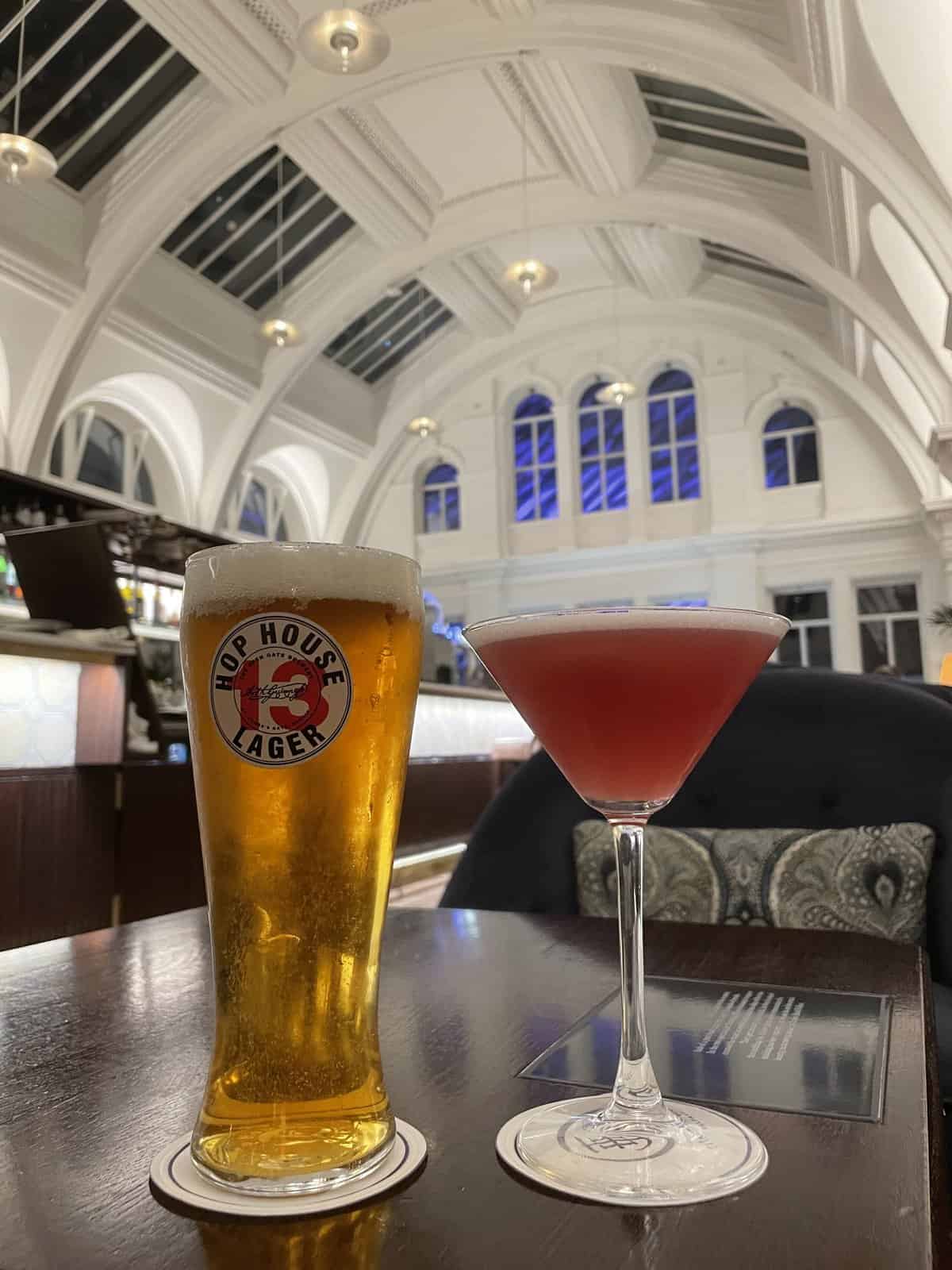
Visitors can partake in a fully guided tour of the distillery, gaining insight into its transformation from an industrial pumping station to a working distillery and tourist attraction. The tour explores the history of the Pumphouse, the whiskey-making process, and the role of the Titanic’s powerful pumps that once drained the Thompson Dock.
A Stay at the Titanic Hotel
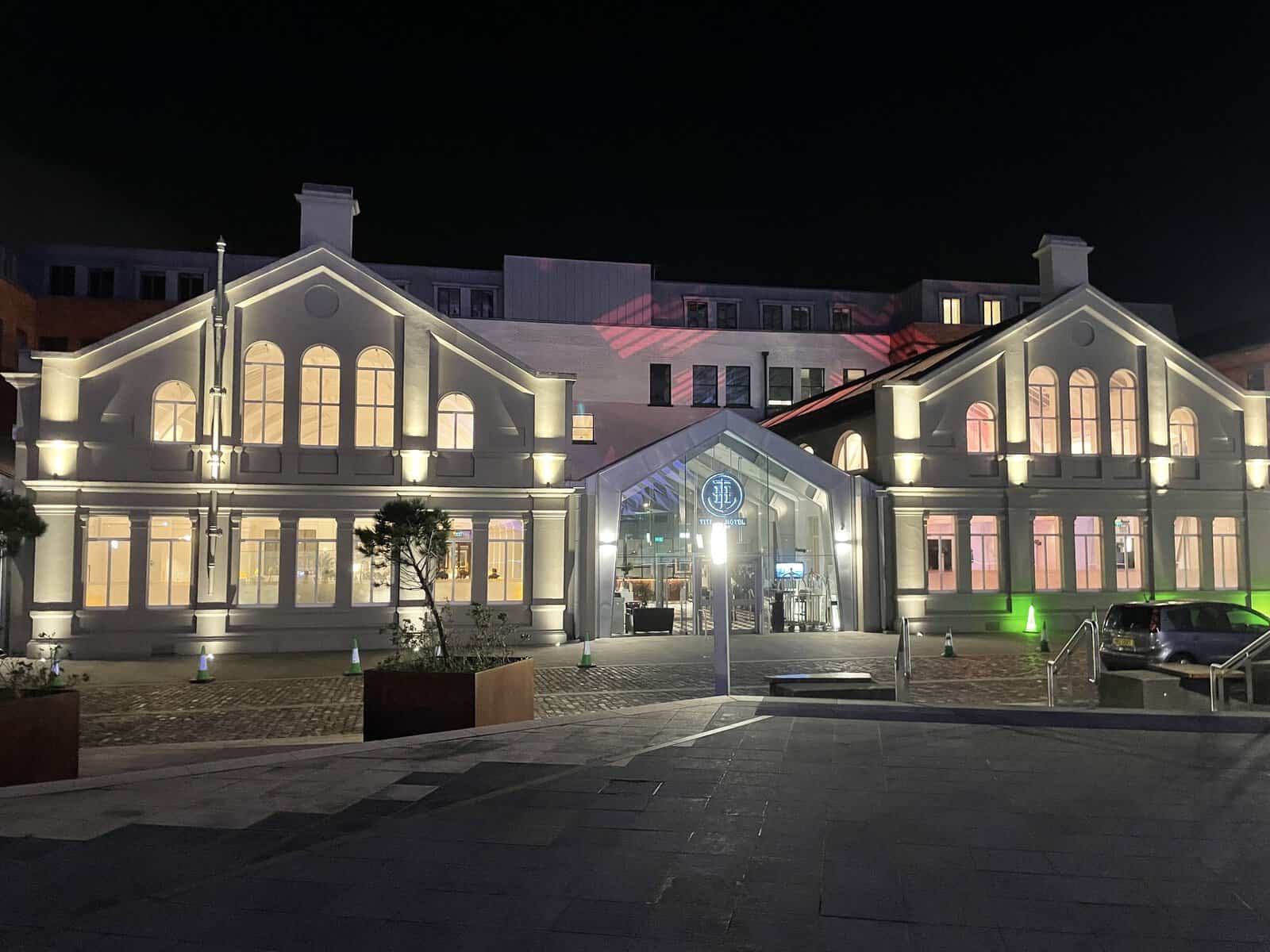
Located in Belfast’s Titanic Quarter, the Titanic Hotel offers a luxurious stay for guests interested in exploring the city’s maritime past. The hotel’s distinctive rooms feature Art Deco furniture, maritime artwork, and H&W artwork, reflecting the nautical theme. Amenities include a 42” flatscreen TV, complimentary Wi-Fi access, bath and/or shower, and impressive views of the surrounding Titanic Quarter.
The hotel’s location and connection to the Titanic’s legacy offer an unforgettable stay for guests delving into Belfast’s rich maritime heritage. Visitors can easily access nearby attractions such as Titanic Belfast, the Titanic Experience, and the historic slipways, enriching their understanding of the city’s shipbuilding past.
Summary
Belfast’s rich maritime history offers visitors a fascinating journey through a city that once dominated the global shipbuilding industry. From the iconic slipways where renowned vessels were launched to the innovative graving docks and luxurious Titanic Hotel, Belfast’s maritime legacy is alive and well. As we’ve explored throughout this blog post, the city’s historic sites and modern marvels provide an unforgettable experience for all who visit. So, set sail on your voyage of discovery and immerse yourself in Belfast’s captivating maritime heritage.
Frequently Asked Questions
Does Belfast have a Harbour?
Yes, Belfast has a Harbour located on the northeast coast of Ireland. The Harbour Estate covers an area of 2,000 acres and has the most extended deep-water quay in Ireland at one kilometre in length. It is also the largest cruise port in Northern Ireland, with over 250,000 visitors each year.
How do I get from Belfast Harbour to the city?
To get from Belfast Port to the city, take the bus, which takes about 20 minutes and is the most convenient option for those without a car.
What happened to HMS Caroline?
HMS Caroline, the last surviving ship from the Battle of Jutland, has been meticulously restored and is now a floating museum honouring its role in both World Wars and as a Royal Navy training ship.
How did Queens Road transform into a bustling shipbuilding hub?
Queens Road quickly became a bustling shipbuilding hub due to major shipyards like Harland and Wolff, which focused on ship repair, conversion, and offshore construction.
What was the role of powerful pumps in Belfast’s graving docks?
Powerful pumps were essential for operating Belfast’s graving docks, enabling them to undertake tasks such as ballasting, bilge pumping, firefighting and cargo handling.

